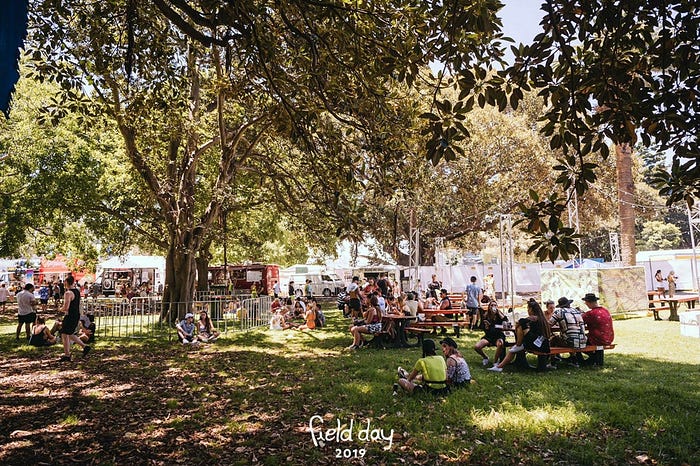If you saw a dollar on the ground, would you pick it up?
Picture this. It’s a warm Summer’s day and you’re walking through a park with some friends. You’re dressed a bit questionably, you probably wouldn’t wear this to grandma’s place. You’re having a bit of a giggle at your mate, who thinks he’s lost his phone, when you look down. You see a dollar on the grass. Do you pick it up? As your pay closer attention to your surroundings, you realise there are dollars scattered everywhere. So many, that you probably have enough for a drink at a nearby vendor. Just in time too, you were getting a little thirsty…

But what if that dollar was actually a can? What if 10 of them bought you a drink? Would you still pick them up? For many Aussie’s attending summer festivals over New Year’s, this prospect is becoming a regular occurance, and the experience is proving lucrative.
Beverage recycling schemes have been standard at a number of festivals for many years. In this time many approaches have been trialled. From a standard exchange of 10 commingled items for 10 tokens towards drinks at the bar, to more generous offers allowing exchange of trash for cold hard cash. Some festivals have even gone as far as to remove commingled recycling all together and instead opting for a cup ‘reuse’ system. Involving an initial small deposit in exchange for a cup that can either be swapped out when empty, kept as a souvenir, or traded back for the deposit.
The operation of each scheme at festivals have revealed many pros and cons for both patrons and organisers, with financial investment and return often the centerpoint for conversation. However it is also important to consider argument beyond the dosh, for sustainability, and. the original basis for creation of these initiatives.
Recycling schemes are often implemented by organises on the basis that they will almost certainly make money from the overheads. Very sorry to tell all you wheeler-dealers out there, but if you’re heading to a festival to cash in on the littering habits of others, you may just be asked to leave by security.
For good reason too. Small rewards are made available to those who ‘do the right thing’, however schemes such as this have been designed with the bigger picture in mind. Through increased funding, festivals are able to invest in greener programs, and divest their oversized environmental footprint. Which is creating a bit of a racket in the Australian Music Industry.
“With more funds, green programs could be expanded, new ideas trialled, and massive inroads made in short timeframes.” Berish Bilander, the co-CEO of Green Music Australia, wrote in The Music Mag’s October 2018 editorial.
“Increased investment would also allow [our] industry to better measure its impact, and share these learnings widely.” He wrote in ‘Green is the New Black’ – a review on the trend of green initiatives at public events. The article summarized many key initiatives that festivals organisers are taking on, not only to start the conversation about sustainability at festivals, but to go further, and be agents of the change.
So next time you see a commingled item on the ground at a festival, embrace not only the short term reward, but get involved with the load of other sustainability initiatives its donation could spark. Through patron and organiser collaboration, the real worth of rubbish at festivals can be realised. Thereby allowing us to party in a way that values the planet, not diminishes it.
Get involved, and go get yo-self a drink, you’ve earned it!
